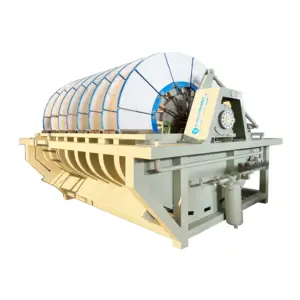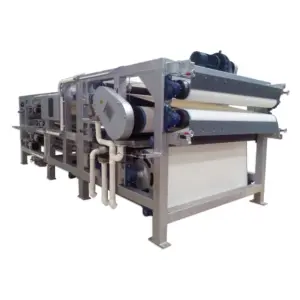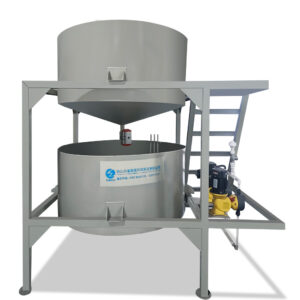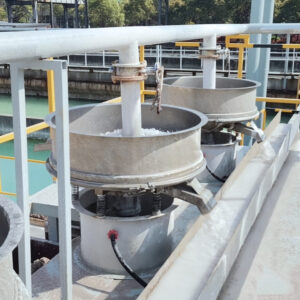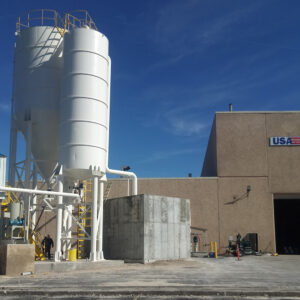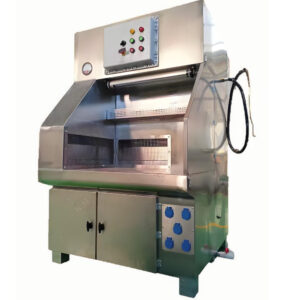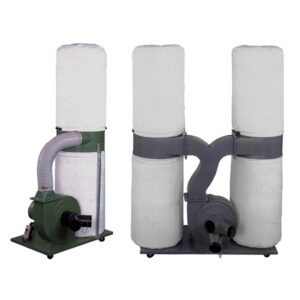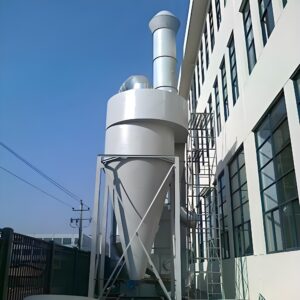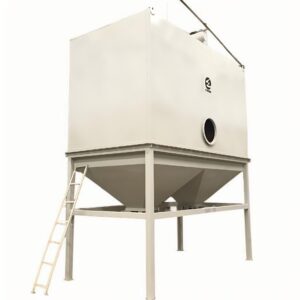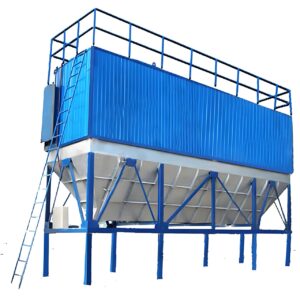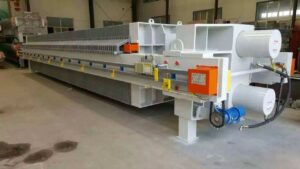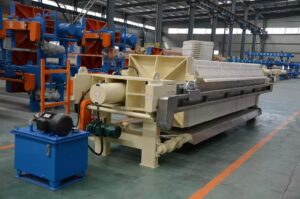Industrial facilities worldwide generate over 300 billion cubic meters of wastewater annually, creating an unprecedented challenge for environmental protection and regulatory compliance. As manufacturing processes become more complex and environmental standards tighten, traditional treatment methods often fall short of meeting the demands of modern industrial operations. The consequences of inadequate treatment extend far beyond regulatory fines – they encompass groundwater contamination, ecosystem disruption, and significant reputation damage that can cripple business operations.
Companies struggling with inefficient treatment systems face mounting pressure from regulatory bodies, escalating operational costs, and the constant threat of environmental incidents. Without proper industrial effluent treatment solutions, facilities risk costly shutdowns, legal penalties, and irreversible environmental damage that can impact entire communities.
This comprehensive guide explores cutting-edge large scale treatment technologies, proven implementation strategies, and cost-effective solutions that enable industries to achieve superior treatment performance while maintaining operational efficiency. We’ll examine real-world case studies, technical specifications, and expert insights that demonstrate how modern treatment systems can transform industrial wastewater challenges into sustainable competitive advantages.
What is Industrial Effluent Treatment and Why Does It Matter?
Industrial effluent treatment encompasses the comprehensive processes used to remove contaminants from wastewater generated by manufacturing, chemical processing, mining, and other industrial operations. Unlike municipal wastewater, industrial effluent often contains complex chemical compounds, heavy metals, organic pollutants, and specialized contaminants that require sophisticated treatment approaches.
The significance of proper treatment extends beyond environmental compliance. According to the International Water Association, effective industrial wastewater processing can reduce water consumption by up to 40% through recycling and reuse programs. Manufacturing facilities implementing comprehensive treatment systems report average cost savings of $2.3 million annually through reduced water purchasing, lower discharge fees, and improved process efficiency.
Modern treatment systems serve multiple critical functions: protecting public health by preventing contamination of water supplies, preserving ecosystem integrity through pollutant removal, and enabling resource recovery from waste streams. Industries utilizing advanced treatment technologies recover valuable materials worth an estimated $15 billion globally each year, transforming waste management from a cost center into a revenue generator.
The regulatory landscape demands increasingly stringent discharge standards. The EPA’s latest industrial pretreatment regulations require facilities to achieve 95% removal efficiency for specified contaminants, while international standards continue to evolve toward zero liquid discharge requirements. PORVOO Clean Tech has observed that facilities investing in robust treatment infrastructure consistently outperform compliance requirements while achieving operational excellence.
How Do Large Scale Effluent Treatment Systems Work?
Large scale treatment systems operate through integrated multi-stage processes designed to address the complex composition of industrial wastewater. These systems typically process volumes ranging from 1,000 to 50,000 cubic meters per day, requiring sophisticated engineering solutions to maintain consistent performance across varying influent conditions.
Physical Treatment Processes
Physical treatment forms the foundation of large scale effluent treatment systems, utilizing mechanical processes to remove suspended solids, oils, and debris. Primary sedimentation tanks, designed with retention times of 2-4 hours, achieve 60-70% suspended solids removal through gravity separation. Advanced clarifier systems incorporate lamella plates or tube settlers, increasing surface area efficiency by 300% compared to conventional designs.
Screening and filtration technologies handle particle removal across multiple size ranges. Coarse screens remove debris larger than 6mm, while micro-screens capture particles down to 10 microns. Sand filtration systems, operating at hydraulic loading rates of 5-10 m³/m²/hour, achieve 95% removal of particles larger than 20 microns. These systems require minimal chemical additives, making them cost-effective for high-volume applications.
Flotation processes excel in removing oil, grease, and low-density particles. Dissolved air flotation (DAF) systems achieve 99% oil removal efficiency by introducing microscopic air bubbles that attach to contaminants, causing them to float for surface skimming. A petrochemical facility in Texas reported 40% reduction in downstream treatment costs after implementing advanced DAF technology.
Chemical Treatment Methods
Chemical treatment processes target dissolved contaminants and complex organic compounds through precipitation, oxidation, and neutralization reactions. Coagulation and flocculation systems use aluminum sulfate or ferric chloride to destabilize colloidal particles, achieving 85-90% removal of suspended solids and associated contaminants.
Oxidation processes, including ozonation and advanced oxidation processes (AOPs), break down persistent organic pollutants that resist biological treatment. Ozone treatment systems operating at 10-20 mg/L dosages achieve 90% removal of phenolic compounds and eliminate color-causing substances. However, these systems require significant energy input, with operational costs ranging from $0.50-$1.20 per cubic meter treated.
pH adjustment and neutralization systems maintain optimal conditions for subsequent treatment stages. Automated dosing systems using sulfuric acid or sodium hydroxide maintain pH within ±0.2 units, ensuring consistent treatment performance. Chemical precipitation removes heavy metals with 99% efficiency, though sludge generation increases by 15-25%, requiring additional handling infrastructure.
Biological Treatment Systems
Biological treatment harnesses microbial processes to degrade organic contaminants, offering cost-effective solutions for high-volume applications. Activated sludge systems, operating at food-to-microorganism ratios of 0.1-0.4 kg BOD/kg MLSS/day, achieve 95% BOD removal while handling hydraulic variations up to 200% of design capacity.
Sequencing batch reactors (SBRs) provide flexible treatment for varying influent compositions. These systems complete treatment cycles in 4-8 hours, allowing facilities to adjust operations based on production schedules. A pharmaceutical manufacturing plant reported 30% energy savings after switching from continuous flow to SBR technology.
Membrane bioreactors (MBRs) combine biological treatment with physical separation, producing high-quality effluent suitable for reuse. While capital costs are 25-40% higher than conventional systems, MBRs reduce footprint requirements by 60% and produce effluent meeting potable water standards. The technology proves particularly valuable for facilities with limited space or stringent discharge requirements.
What Are the Key Components of High Volume Effluent Systems?
High volume effluent systems require carefully integrated components designed to handle substantial flow rates while maintaining treatment efficiency. System architecture must accommodate peak flows up to 300% of average daily volumes while ensuring consistent pollutant removal performance.
Primary Treatment Infrastructure
Equalization tanks serve as the foundation of large scale systems, providing flow and load balancing that prevents downstream process disruption. These tanks, sized for 8-24 hour retention times, incorporate mixing systems generating 20-30 watts per cubic meter to prevent settling while maintaining homogeneous conditions. Automated level control systems manage influent flow rates, reducing peak loads by 50-70%.
Screening facilities utilize multiple barrier approaches, from coarse bar screens (25-50mm spacing) to fine screens (1-3mm openings). Mechanical raking systems remove accumulated debris automatically, while wash water systems maintain screen efficiency. The total screening infrastructure typically represents 5-8% of system capital costs but prevents equipment damage and process disruption throughout the facility.
Primary sedimentation systems for high-volume applications feature circular clarifiers with diameters of 30-60 meters, designed for surface loading rates of 24-48 m³/m²/day. Mechanical sludge removal systems operate continuously, preventing accumulation that reduces treatment efficiency. These systems achieve 50-65% suspended solids removal while generating primary sludge requiring further processing.
Secondary and Tertiary Treatment Units
Secondary treatment systems handle the bulk of pollutant removal through biological or advanced chemical processes. Aeration systems consume 40-60% of total plant energy, making efficient design crucial for operational sustainability. Fine bubble diffusers achieve oxygen transfer efficiencies of 25-35%, while surface aerators provide mixing and oxygen transfer at 2-4 kg O₂/kWh efficiency.
| Treatment Stage | Typical Removal Efficiency | Energy Consumption | Capital Cost Share |
|---|---|---|---|
| Primary Treatment | 50-65% SS, 25-35% BOD | 10-15% | 20-25% |
| Secondary Treatment | 85-95% BOD, 90-95% SS | 50-65% | 45-55% |
| Tertiary Treatment | 95-99% targeted pollutants | 25-35% | 20-30% |
Tertiary treatment systems provide final polishing and specialized contaminant removal. Membrane filtration systems, operating at 15-25 bar pressure, achieve 99.9% removal of particles and pathogens. Activated carbon adsorption removes trace organics and color compounds, with carbon consumption rates of 0.5-2.0 kg per cubic meter treated. These systems enable water reuse applications, reducing fresh water demands by 30-60%.
Monitoring and Control Systems
Modern wastewater treatment systems incorporate sophisticated monitoring and control technologies that optimize performance while ensuring regulatory compliance. SCADA systems monitor over 200 parameters continuously, including flow rates, chemical concentrations, equipment performance, and energy consumption. Real-time data analysis enables predictive maintenance, reducing unplanned downtime by 40% while extending equipment life by 15-20%.
Online analyzers measure critical parameters including pH, dissolved oxygen, turbidity, and specific contaminant concentrations. These systems provide feedback for automated control systems that adjust chemical dosing, aeration rates, and flow distribution. A chemical processing facility reported 25% reduction in chemical consumption after implementing advanced process control systems.
Laboratory analysis capabilities support compliance monitoring and process optimization. Automated sampling systems collect representative samples across multiple points, while rapid testing equipment provides results within 2-4 hours for key parameters. This rapid feedback enables operators to make real-time adjustments that prevent discharge violations and optimize treatment efficiency.
How to Choose the Right Heavy Duty Water Treatment Solution?
Selecting appropriate heavy duty water treatment technology requires comprehensive evaluation of site-specific conditions, regulatory requirements, and long-term operational goals. The decision impacts both immediate capital investment and decades of operational performance, making thorough analysis essential for project success.
Industry-Specific Requirements
Different industries generate effluent with distinct characteristics requiring specialized treatment approaches. Pharmaceutical manufacturing produces wastewater containing antibiotics, hormones, and complex organic compounds that resist conventional biological treatment. Advanced oxidation processes combined with membrane filtration achieve 99.9% removal of pharmaceutical residues, though capital costs reach $3,000-$5,000 per cubic meter of daily capacity.
Metal finishing operations generate effluent containing heavy metals, cyanides, and concentrated acids requiring specialized chemical treatment. Electrocoagulation systems remove 99% of heavy metals while generating 60% less sludge than chemical precipitation. A automotive parts manufacturer reduced treatment costs by 35% after implementing electrocoagulation technology for chromium and nickel removal.
Food processing facilities produce high-strength organic wastewater with BOD concentrations of 2,000-15,000 mg/L. Anaerobic treatment systems handle these loads cost-effectively while generating biogas for energy recovery. A dairy processing plant generates 2,400 kWh daily from biogas, offsetting 30% of facility energy consumption while achieving 90% COD removal.
Capacity and Flow Rate Considerations
Treatment system sizing requires detailed analysis of current and future flow patterns. Peak flow rates typically exceed average flows by 200-400%, necessitating equalization or oversized equipment. Modular system designs accommodate growth, allowing capacity increases of 50-100% through additional treatment trains rather than complete reconstruction.
Hydraulic loading rates significantly impact treatment performance and capital requirements. Conservative loading rates of 0.8-1.2 m³/m²/hour ensure consistent performance but increase land requirements and construction costs. Intensive loading systems achieve 2-3 times higher throughput but require advanced process control and may experience reduced treatment efficiency during peak loads.
| Flow Rate Category | Design Considerations | Typical Technology | Capital Cost Range |
|---|---|---|---|
| <1,000 m³/day | Compact systems, minimal automation | Package plants, SBR | $800-1,200/m³/day |
| 1,000-10,000 m³/day | Balance efficiency and flexibility | Conventional activated sludge | $600-900/m³/day |
| >10,000 m³/day | Economy of scale, advanced control | Multiple treatment trains | $400-700/m³/day |
Cost-Benefit Analysis
Comprehensive economic analysis must consider capital costs, operational expenses, and long-term benefits including regulatory compliance, resource recovery, and risk mitigation. While advanced treatment systems may require 40-60% higher capital investment, operational savings and risk reduction often justify the additional expense within 5-7 years.
Operating costs vary significantly based on technology selection and local conditions. Energy represents 25-40% of operational expenses, making energy-efficient design crucial for long-term viability. Chemical costs range from $0.10-$0.50 per cubic meter treated, depending on effluent composition and treatment requirements. A chemical manufacturing facility reduced operational costs by 45% through energy recovery systems and chemical optimization programs.
In our experience, facilities achieving the lowest life-cycle costs typically invest in robust primary treatment, energy-efficient secondary systems, and comprehensive automation. This approach minimizes operational labor while maximizing treatment reliability and regulatory compliance.
What Challenges Do Large Scale Systems Face?
Industrial discharge treatment systems encounter complex operational challenges that can significantly impact performance, costs, and regulatory compliance. Understanding these limitations enables proactive management strategies that maintain system reliability while optimizing performance.
Technical Limitations
Equipment fouling represents a persistent challenge in large scale systems, particularly when treating industrial effluent containing oils, suspended solids, and scaling compounds. Membrane systems experience flux decline of 20-40% annually due to fouling, requiring regular cleaning and eventual replacement. While chemical cleaning can restore 80-90% of original performance, cleaning frequency increases operational costs by $0.15-$0.25 per cubic meter treated.
Process variability creates significant operational challenges as industrial production changes affect effluent composition and volume. Biological treatment systems are particularly sensitive to shock loads, with recovery times of 2-7 days following major upsets. A textile facility experienced 30% treatment efficiency reduction after implementing new dyeing processes without corresponding treatment system modifications.
Equipment reliability issues can cause system failures with severe consequences. Critical equipment such as pumps, blowers, and control systems have mean time between failures ranging from 12,000-25,000 hours, requiring comprehensive maintenance programs and backup systems. The financial impact of system failures averages $50,000-$200,000 per incident, including regulatory penalties, emergency repairs, and lost production time.
Regulatory Compliance Issues
Evolving regulations create ongoing compliance challenges as discharge standards become increasingly stringent. The EPA’s latest revisions to industrial pretreatment standards require 25% reduction in discharge limits for key pollutants, forcing many facilities to upgrade treatment systems. Compliance costs range from $500,000-$5,000,000 depending on facility size and required modifications.
Monitoring and reporting requirements demand sophisticated data management systems and trained personnel. Facilities must maintain detailed records of treatment performance, chemical usage, and discharge quality for regulatory review. Non-compliance penalties range from $25,000-$50,000 per violation, with repeat offenses resulting in criminal prosecution and facility closure orders.
It’s worth noting that regulatory compliance extends beyond discharge limits to include air emissions, noise levels, and waste management practices. Comprehensive compliance programs require dedicated personnel and annual budgets of $100,000-$500,000 for large facilities, though these investments prevent far more costly enforcement actions.
How Can Industries Optimize Their Effluent Treatment Performance?
Performance optimization requires integrated approaches combining advanced technologies, operational excellence, and continuous improvement methodologies. Modern optimization strategies can improve treatment efficiency by 15-30% while reducing operational costs and environmental impact.
Advanced Technologies and Innovations
Artificial intelligence and machine learning systems enable predictive optimization of treatment processes. AI-powered control systems analyze historical data, weather patterns, and production schedules to predict optimal operating parameters. A chemical processing facility reported 20% energy savings and 15% improvement in treatment efficiency after implementing AI-based process control.
Advanced sensor technologies provide real-time monitoring of treatment performance with unprecedented accuracy. Spectroscopic analyzers measure multiple parameters simultaneously, detecting contaminant concentrations as low as 1 ppb. IoT sensor networks monitor equipment condition, predicting maintenance needs 30-60 days in advance and reducing unplanned downtime by 50%.
Emerging treatment technologies offer superior performance for specific applications. Electrochemical treatment systems remove persistent organic pollutants with 99% efficiency while generating minimal sludge. Constructed wetlands provide cost-effective polishing treatment, reducing operational costs by 40-60% compared to conventional tertiary systems. These advanced treatment solutions demonstrate improved performance while supporting sustainability goals.
Best Practices for System Management
Preventive maintenance programs significantly impact system reliability and performance. Weekly inspection schedules, monthly equipment servicing, and annual major overhauls prevent 80% of potential failures while extending equipment life by 25-40%. Maintenance costs typically represent 3-5% of system replacement value annually but prevent far more expensive emergency repairs and production disruptions.
Operator training and certification programs ensure consistent system performance across all shifts. Comprehensive training programs require 40-80 hours initially, with annual refresher training maintaining competency. Facilities with certified operators achieve 95% regulatory compliance rates compared to 70% for facilities with inadequately trained staff.
Performance monitoring and optimization programs identify improvement opportunities through systematic data analysis. Monthly performance reviews examining energy consumption, chemical usage, and treatment efficiency reveal optimization potential worth 5-15% of operational costs. A food processing facility reduced operational costs by $300,000 annually through systematic optimization of aeration, chemical dosing, and sludge handling processes.
| Optimization Strategy | Implementation Cost | Payback Period | Performance Improvement |
|---|---|---|---|
| AI Process Control | $200,000-500,000 | 2-3 years | 15-25% efficiency gain |
| Advanced Monitoring | $100,000-300,000 | 1-2 years | 10-20% cost reduction |
| Preventive Maintenance | $50,000-150,000 | 6-12 months | 30-50% downtime reduction |
Conclusion
Industrial effluent treatment represents a critical intersection of environmental stewardship, regulatory compliance, and operational excellence. The evolution toward large scale, sophisticated treatment systems reflects growing recognition that effective wastewater management creates competitive advantages while protecting environmental resources. Key insights from this comprehensive analysis reveal that successful systems integrate multiple treatment technologies, embrace advanced monitoring and control systems, and maintain flexibility for changing operational requirements.
The most successful facilities consistently demonstrate that initial investments in robust treatment infrastructure generate substantial long-term returns through reduced operational costs, improved regulatory compliance, and enhanced resource recovery opportunities. Modern treatment systems achieving 95% pollutant removal efficiency while generating renewable energy and recovering valuable materials transform traditional waste management paradigms into sustainable operational advantages.
For industries evaluating treatment options, the evidence strongly supports comprehensive system approaches that combine proven technologies with advanced control systems and professional operation. While capital requirements may seem substantial, the long-term benefits including regulatory compliance, operational reliability, and environmental protection justify investment in quality treatment infrastructure.
Moving forward, successful industrial effluent treatment will increasingly rely on integrated technologies, data-driven optimization, and sustainable design principles. Companies that embrace these approaches position themselves for regulatory success while contributing to environmental preservation and resource conservation.
Consider evaluating your current treatment capabilities against evolving regulatory requirements and operational demands. Professional assessment of your facility’s specific needs can identify opportunities for performance improvement, cost reduction, and enhanced environmental protection through comprehensive wastewater treatment solutions designed for long-term success.
The future of industrial water management demands proactive approaches that anticipate regulatory changes while maximizing operational efficiency. How will your facility adapt to meet these evolving challenges while maintaining competitive advantages in an increasingly environmentally conscious marketplace?
Frequently Asked Questions
Q: What is Industrial Effluent Treatment | Large Scale Solutions?
A: Industrial Effluent Treatment | Large Scale Solutions refers to specialized processes and systems designed to clean and manage wastewater generated by large industrial operations. These solutions treat contaminants, reduce pollution, and ensure the treated water meets environmental discharge standards. They often involve advanced filtration, biological treatment, chemical processing, and sludge management to handle high volumes of effluent efficiently.
Q: Why is Industrial Effluent Treatment important for large-scale industries?
A: Industrial Effluent Treatment is crucial because untreated wastewater from industries contains harmful pollutants that can damage ecosystems and violate legal discharge limits. Large-scale solutions help industries comply with environmental regulations, reduce health risks, recover resources, and minimize operational costs by recycling water and reducing waste. Effective treatment supports sustainability and corporate responsibility.
Q: What technologies are commonly used in large-scale industrial effluent treatment?
A: Large-scale industrial effluent treatment commonly uses a combination of:
- Mechanical filtration to remove solids and sediments
- Biological processes to break down organic contaminants
- Chemical treatments to neutralize harmful substances
- Advanced media filtration, such as specialized aluminosilicates, for removing toxins
- Sludge handling and energy recovery systems
These integrated technologies ensure thorough purification and minimize downtime and costs.
Q: How do customized Industrial Effluent Treatment plants cater to specific industrial needs?
A: Customized plants are designed according to the unique wastewater characteristics of each industrial site. They consider factors like pollutant types, volume, and regulatory requirements. This tailored approach allows plants to efficiently meet strict effluent standards, operate compactly, and run with low energy consumption and maintenance, making them suitable for industries like food processing, breweries, dairy, and chemical manufacturing.
Q: What are the environmental and operational benefits of using large-scale Industrial Effluent Treatment solutions?
A: Benefits include:
- Compliance with environmental regulations through effective contaminant removal
- Reduced environmental footprint by recycling and reusing treated water
- Lower sludge production and disposal costs
- Energy savings with optimized and compact treatment systems
- Resource recovery such as biogas and heat from waste byproducts
These advantages enhance sustainability while improving industrial operational efficiency.
Q: How can industries ensure the reliability and cost-effectiveness of large-scale effluent treatment systems?
A: Industries can ensure this by selecting proven technologies and modular designs that allow for easy maintenance and scalability. Using energy-efficient processes and reliable treatment media reduces running costs. Engaging experts who design based on site-specific data and provide ongoing support helps maintain consistent performance, avoiding failures and costly downtime in large-scale operations.
External Resources
Industrial Effluent Treatment Plant – Biocell Water – Explores customizable large-scale solutions for industrial effluent treatment, highlighting advanced technologies and energy efficiency across a range of industrial applications.
Industrial wastewater treatment solutions – Alfa Laval – Details broad and scalable industrial effluent treatment solutions engineered to meet stringent discharge criteria, maximize water reuse, and reduce environmental impact.
Wastewater Treatment Solutions & Technologies | Fluence – Offers sustainable industrial effluent treatment systems with a focus on modular, decentralized technologies suitable for large-scale and remote applications.
Mastering Industrial Effluent Treatment: Expert Strategies and Solutions | Genesis Water Technologies – Provides an expert overview of industrial effluent treatment strategies, including mechanical, chemical, and biological solutions tailored for large-scale requirements.
Industrial Wastewater Treatment Solutions | SUEZ Water Technologies & Solutions – Presents industrial-scale effluent treatment systems designed for complex wastewater streams, focusing on efficiency, regulatory compliance, and resource recovery.
Large Scale Industrial Wastewater Treatment Solutions | Veolia Water Technologies – Discusses integrated, large-scale solutions for treating industrial effluents, including advanced filtration, zero liquid discharge options, and custom system design for various industries.
